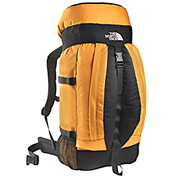
|
|
|
|
Go to the Playright Sporting Goods Catalog!!!!! 


How To Buy General Camping Accessories Sometimes it is the little things that make or break a trip. Here's a basic list to get you started on the right track. Maps, compass and field guides, Personal items, Lights, First aid kits, Knives and tools, Sleeping pads, Emergency blankets, Maps, compass and field guides Maps will tell you where you are and how far you have yet to travel. They can also help you find campsites, water, and emergency exit routes. Used with a map, a compass will help guide you through unfamiliar terrain. Be sure to learn how to use it before you go into the outdoors! Field guides will help you identify flora and fauna, and will discuss the geological history of the terrain you are passing through Here are some key items to bring along on any trip lasting more than a day: Sunscreen, lip balm and sunglasses A particular necessity if you're out in the open or in high altitudes An SPF (sun protection factor) of 25 or higher is recommended year-round Medications Including prescriptions, pain killers and antihistamines Bring along a plastic storage container to keep them dry Insect repellent Particularly if you plan to be in the woods or near water Multi-purpose lotions will protect you day and night Toilet paper For those who eschew leaves Personal hygiene items Toothbrush and paste Mirror Biodegradable soap Comb or brush Contact lens supplies What you choose depends on what you'll be doing and where you'll be camping. Lanterns Lanterns, because of their size and fuel requirements, are best in base camps or more permanent campsites They are also suitable for car camping Headlamps Headlamps are great for those who don't want to be encumbered with a flashlight They are especially useful in the backcountry, and are good for those who must hike or climb in the dark Flashlights Flashlights come in a wide range of sizes and styles Don't forget to bring extra bulbs You can buy prepackaged kits or create your own. It is an essential on any trip. Items should include (but are not limited to): Triangular bandages Pressure bandages A roll of gauze Adhesive tape Band-Aids Moleskin Scissors Tweezers Antiseptic Insect Bite/Bee Sting Medication Pencil and paper First aid booklet Needle and thread Pain relievers and other medications you may require These will serve a variety of purposes, such as cutting a cloth into bandages, repairing eyeglasses and gear, and opening cans. Straight knives Take up more room, but are often sturdier than folding knives Better for jobs where a lot of cutting or slicing is required Folding knives Basic and utilitarian Usually consist of one blade that folds into the handle Utility knives Offer more choices than straight or folding knives Usually come with a variety of blade sizes and edges Multi-use tools Combine knife blades with a host of other implements such as pliers, screw drivers, corkscrews, bottle openers, allen keys, even socket wrenches Many are sport-specific (such as those made for biking, snowboarding and golf) A sleeping pad will add comfort, help decrease heat loss between you and the ground, and protect your sleeping bag from extra wear. The two main types are inflatable and foam. Foam pads Foam pads come in varying thicknesses and lengths, which affects compressibility Unlike inflatable pads, foam won't puncture and will last longer Most foam pads aren't as comfortable as inflatable pads Inflatable Inflatable pads are usually self-inflating They are generally more comfortable than foam Will not last as long and stand the risk of puncture When deflated inflatable pads are more compact and pack easier than foam Useful if you get wet, lost, cold or the weather takes a turn for the worst. Made of thin, reflective material that will help you retain body heat Emergency blankets are light, weighing as little as 3 ounces They are designed to retain 80% of a person's radiated body heat Most are made of polyethylene film and aluminum laminates |